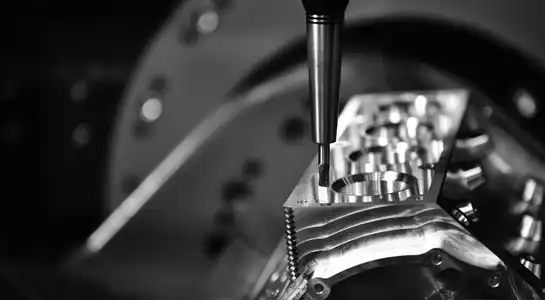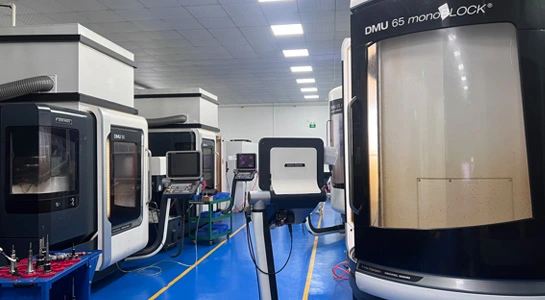Understanding Pre-Production Runs and Their Impact on Product Development
Defining Pre-Production Runs
Pre-production runs, also known as pilot runs or trial production, are small-scale manufacturing tests conducted before full-scale production begins. These runs aim to simulate the actual production process, allowing manufacturers to identify potential issues, optimize workflows, and ensure product quality. By producing a limited number of units, companies can gain valuable insights into their manufacturing processes without the risks associated with large-scale production.
The Importance of Pre-Production in Product Development
Pre-production runs are a critical step in the product development lifecycle. They bridge the gap between prototyping and full-scale manufacturing, providing an opportunity to refine designs, test production methods, and validate product quality. This phase allows companies to:
- Identify and resolve design flaws
- Optimize manufacturing processes
- Assess production costs accurately
- Train production staff
- Validate quality control measures
By addressing these aspects early in the development process, companies can significantly reduce the time and resources required to bring a product to market.
How Pre-Production Runs Accelerate Time to Market
Pre-production runs contribute to faster time to market in several ways:
- Early problem detection: Identifying and resolving issues before full-scale production prevents costly delays and rework.
- Process optimization: Refining manufacturing processes during pre-production leads to more efficient full-scale production.
- Reduced learning curve: Production staff gain experience with the new product, minimizing errors during full-scale manufacturing.
- Improved quality control: Pre-production runs allow for the development and validation of effective quality control measures.
- Faster regulatory approval: For industries with strict regulations, pre-production runs can provide necessary data for compliance and certification.
By addressing these factors, pre-production runs enable companies to launch products more quickly and with greater confidence in their quality and manufacturability.
Key Benefits of Implementing Pre-Production Runs
Cost Reduction and Resource Optimization
One of the primary advantages of pre-production runs is their ability to reduce overall costs and optimize resource allocation. By identifying potential issues early in the manufacturing process, companies can avoid expensive mistakes and minimize waste. Pre-production runs allow manufacturers to:
- Fine-tune material usage and reduce scrap rates
- Optimize production line layouts for improved efficiency
- Identify and eliminate unnecessary steps in the manufacturing process
- Accurately estimate production costs and set competitive pricing
These cost-saving measures not only improve profitability but also enable companies to allocate resources more effectively, further accelerating time to market.
Quality Assurance and Product Refinement
Pre-production runs play a crucial role in ensuring product quality and refining designs. By manufacturing a small batch of products, companies can:
- Identify and address potential quality issues before full-scale production
- Test and validate quality control procedures
- Gather real-world data on product performance and durability
- Make final design adjustments based on manufacturing feedback
This focus on quality assurance not only reduces the risk of product recalls and customer dissatisfaction but also builds confidence in the product's readiness for market launch.
Enhanced Supply Chain Management
Pre-production runs offer valuable insights into supply chain management, helping companies streamline their operations and reduce time to market. Benefits include:
- Identifying potential supplier issues or bottlenecks
- Validating lead times for materials and components
- Establishing effective communication channels with suppliers
- Optimizing inventory management strategies
By addressing these supply chain considerations during pre-production, companies can ensure a smoother transition to full-scale manufacturing and avoid delays caused by logistical issues.
Strategies for Maximizing the Effectiveness of Pre-Production Runs
Comprehensive Planning and Goal Setting
To maximize the benefits of pre-production runs, thorough planning and clear goal-setting are essential. Companies should:
- Define specific objectives for the pre-production run
- Establish key performance indicators (KPIs) to measure success
- Create a detailed timeline and allocate resources accordingly
- Involve all relevant stakeholders in the planning process
By approaching pre-production runs with a well-defined strategy, companies can ensure that they gather the most valuable insights and make the most of this critical phase in product development.
Cross-Functional Collaboration and Communication
Effective pre-production runs require collaboration across multiple departments and disciplines. To foster this collaboration:
- Establish clear communication channels between design, engineering, manufacturing, and quality control teams
- Encourage regular feedback sessions and problem-solving meetings
- Implement systems for sharing data and insights across teams
- Ensure all stakeholders understand the goals and importance of the pre-production run
This collaborative approach ensures that insights gained during pre-production are effectively communicated and acted upon, leading to faster problem-solving and more efficient product development.
Leveraging Advanced Technologies and Data Analytics
Incorporating cutting-edge technologies and data analytics can significantly enhance the effectiveness of pre-production runs. Companies should consider:
- Implementing digital twin technology to simulate and optimize production processes
- Utilizing IoT sensors to gather real-time data during pre-production runs
- Applying machine learning algorithms to identify patterns and predict potential issues
- Using advanced analytics tools to process and interpret data from pre-production runs
By leveraging these technologies, manufacturers can gain deeper insights from their pre-production runs, make more informed decisions, and further reduce time to market.
Conclusion
Pre-production runs are a vital tool in reducing time to market for new products. By providing a controlled environment to test and refine manufacturing processes, these small-scale production tests enable companies to identify and resolve issues early, optimize resources, and ensure product quality. The benefits of pre-production runs extend beyond just time savings, encompassing cost reduction, quality assurance, and improved supply chain management. To maximize the effectiveness of pre-production runs, companies should focus on comprehensive planning, cross-functional collaboration, and the integration of advanced technologies. By embracing these strategies, manufacturers can significantly accelerate their product development cycles and gain a competitive edge in today's fast-paced market.

FAQs
1. How long does a typical pre-production run last?
The duration of a pre-production run can vary depending on the product complexity and industry. It typically ranges from a few days to several weeks.
2. Are pre-production runs necessary for all types of products?
While beneficial for most products, pre-production runs are particularly crucial for complex or high-volume products, or those in regulated industries.
3. How many units are typically produced during a pre-production run?
The number of units can vary, but it's usually a small fraction of the planned full production run, often ranging from 50 to 500 units.
Expert Pre-Production Run Services for Faster Market Entry | BOEN
At BOEN Prototype, we specialize in providing high-quality pre-production run services to help you reduce time to market. Our expertise in prototyping and low-volume production for both plastic and metal materials enables us to support your product development across various industries. As a leading supplier and manufacturer, we offer fast turnaround times and guaranteed quality. Contact us at contact@boenrapid.com to learn how we can accelerate your product launch.
References
Smith, J. (2022). "The Impact of Pre-Production Runs on Manufacturing Efficiency." Journal of Industrial Engineering, 45(3), 112-128.
Johnson, A., & Brown, L. (2021). "Optimizing Product Development Through Effective Pre-Production Strategies." International Journal of Production Economics, 210, 45-59.
Lee, S. H. (2023). "Reducing Time to Market: A Comprehensive Guide to Pre-Production Runs." Manufacturing Technology Today, 18(2), 75-90.
Wilson, M., & Thompson, R. (2022). "The Role of Advanced Technologies in Enhancing Pre-Production Run Effectiveness." Journal of Manufacturing Systems, 62, 178-195.
Garcia, E., & Martinez, C. (2021). "Supply Chain Optimization Through Pre-Production Run Analysis." Supply Chain Management: An International Journal, 26(4), 401-418.
Anderson, K. L. (2023). "Quality Assurance in Pre-Production: Best Practices for Rapid Product Launch." Quality and Reliability Engineering International, 39(1), 22-38.






